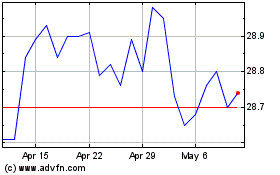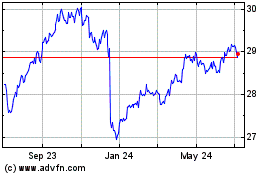With the U.S. economy coming back stronger than most in 2013,
the focus of many investors has been on the domestic market. This
trend isn’t exclusive to the equity world either, as a number of
bond ETFs targeting Treasury securities have also seen solid
inflows to start the year.
Largely, this push has been thanks to a strong dollar and
concerns about a variety of developed and emerging markets around
the globe. Many key nations like Britain, China, Brazil, and
France, have all seen a bout of weakness while the dollar’s
strength has dulled the repatriated value of overseas gains as well
(Read Buy These ETFs to Benefit from Japan’s Massive Easing).
Still, many are growing more optimistic about emerging markets,
as many of these quickly-growing nations remain on a solid growth
track. And, from a fixed income perspective, most emerging markets
have low debt loads and reasonable discount rates, suggesting that
they are well-positioned for the years ahead no matter what the
future brings.
Dollar-Denominated Bond ETFs in Focus
Thanks to these positive trends, but the continued presence of a
stubbornly strong dollar, investors who are thinking of making a
more global play for their fixed income could be well served by
looking at dollar-denominated bond ETFs. These funds invest in
sovereign debt from a variety of emerging nations, but do so via
U.S. dollar-denominated securities.
This approach eliminates the currency risk that can be a huge
hazard in the emerging bond world, while still exposing investors
to the strong balance sheets of these nations. And since many of
these nations remain below-investment grade—despite the relatively
strong positions of their economies—yields look to be elevated when
compared to similar bonds for developed market nations (see Buy
These Bond ETFs for Income and Diversification).
Given these positives, it could be time to look at emerging
market dollar-denominated bond ETFs for exposure. This is
especially true given that two of the most popular funds in the
space have been seeing strong technicals as well.
In fact, two of the biggest ETFs in this space have both seen
their 15 day simple moving averages cross above their longer term
200 day moving averages. This suggests that short-term bullishness
is ahead for the space possibly signaling that it could be time to
take a closer look at either of these well-positioned ETFs:
PowerShares Emerging Markets Sovereign Debt Portfolio
(PCY)
This ETF invests in just under two dozen emerging market
sovereign bonds, offering diverse exposure across the globe.
Countries from around the world are represented, including roughly
one-third in Latin America, another third in emerging Europe, and
the rest across Asia, the Middle East and Africa.
Credit exposure is heavily skewed towards the ‘BBB’ level so
there is some risk there, although the interest rate risk is
moderate. On this front, the effective duration is roughly 9.5
years, putting PCY in the middle part of the curve (read 3
Excellent ETFs for Income Investors).
In terms of yield though, the ETF sees a SEC 30 Day payout of
about 3.7%, while costs come in at 50 basis points a year. The fund
is still down about 1.5% so far in 2013, though it has come back a
bit in recent weeks, adding about 1.1% in the trailing one month
time frame.
iShares Emerging Markets USD Bond ETF (EMB)
This ETF looks to track the J.P. Morgan EMBI Global Core Index,
a benchmark of U.S. dollar denominated emerging markets debt. This
index also looks to limit the weights of nations with higher debt
outstanding, and then reallocate this excess to countries with
lower levels of debt outstanding, hopefully tilting the portfolio
to safer nations in the process.
This results in a portfolio that is also well-diversified across
continents, with Latin America and Europe accounting for roughly
one-third of the assets, and the rest going to Asia, the Middle
East and Africa. However, unlike PCY, this ETF is a bit more
concentrated, putting roughly 6.7% in nations such as Russia,
Brazil, and Turkey.
For a 30 Day SEC Yield, the fund pays out roughly 3.6% to
investors, while costing about 59 basis points a year in fees. In
terms of performance, this fund has also lost about 1.5% in the
year-to-date time frame, while it too has come back in recent
trading, adding about 0.7% in the last month.

Bottom Line
Both PCY and EMB present compelling values at this time thanks
to their strong yields and exposure to well-positioned countries.
Plus, their spread out holdings insures that no single country will
bring down the fund or cause big issues for the total return
picture (read 4 Best ETF Strategies for 2013).
Best of all though, both of these ETFs are dollar-denominated so
there aren’t any currency risks in these products. So if the dollar
remains strong, these ETFs could outperform their local-currency
cousins, while still offering up solid exposure to the resurgent
story in the emerging world.
This could be an ideal combination for many investors, and
especially those who are overexposed to U.S. Treasury investments
at this time. So if you are in the market for a new bond ETF,
definitely consider PCY or EMB for lower risk exposure to the
emerging market world in today’s strong dollar environment.
Want the latest recommendations from Zacks Investment Research?
Today, you can download 7 Best Stocks for the Next 30
Days. Click to get this free report >>
SPDR-BC EM LB (EBND): Get Free Report
ISHARS-JPM EM B (EMB): Free Stock Analysis Report
MKT VEC-EMG MKT (EMLC): Get Free Report
PWRSH-EM SVN DP (PCY): Free Stock Analysis Report
PWRSH-DB US$ BU (UUP): Get Free Report
To read this article on Zacks.com click here.
Zacks Investment Research
Want the latest recommendations from Zacks Investment Research?
Today, you can download 7 Best Stocks for the Next 30 Days. Click
to get this free report
Invesco DB US Dollar Ind... (AMEX:UUP)
Historical Stock Chart
From Jun 2024 to Jul 2024

Invesco DB US Dollar Ind... (AMEX:UUP)
Historical Stock Chart
From Jul 2023 to Jul 2024
